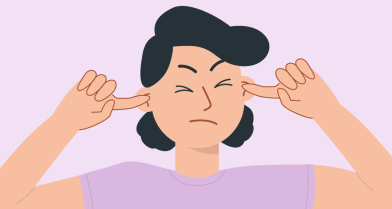The Most Dangerous Teen Hobbies (And How to Channel That Energy Safely)

Teenagers love to test boundaries. With hormones running wild and the world feeling like an endless playground, peer approval often takes priority over common sense. In their search for self-expression and adrenaline, they sometimes push the limits a little too far—into territory where one mistake can be life-threatening.
Let’s dive into the risky hobbies that are trending among teens, why they’re drawn to them, and how to guide their energy in a safer direction.
⚠️ Who’s Most at Risk?
Short answer: all teens.
As a group, adolescents are more likely than younger kids or adults to embrace uncertainty if there is a reward. One of the most powerful is related to a neurotransmitter in the brain called dopamine—often called the ‘feel-good’ hormone. This is the ‘reward’ teens get when physically pushing boundaries or getting positive feedback from peers. And it’s a strong motivator!
⠀
We also should keep in mind that the more advanced area of the brain called the prefrontal cortex matures last—in fact it’s not fully developed until age 25! This is related to executive function, which is closely tied to decision-making. It’s responsible for regulating behavioral responses. And finally, it’s aligned with logical thinking and since it’s still developing, emotions often are first in line for what drives teens during risk-taking.
But if we look closer, some groups are especially likely to seek out risky activities as a form of self-assertion:
- Overprotected kids. If every step is monitored, sooner or later, many will make a sharp turn toward freedom—often in extreme ways.
- Kids craving attention. Sometimes, dangerous hobbies become a way of shouting to parents and friends, “Hey, I exist!”
- Teens chasing fame. Social media turns thrill-seekers into TikTok stars. The higher the risk, the more views. And to an impressionable teen brain, a “heroic” death caught on video might seem… epic.
- A group of daredevils. A teen might not climb a 25-story rooftop alone, but if a friend dares them? Saying no could mean social disaster—at least it feels that way!
Now, let’s talk specifics. What hobbies actually lure kids into dangerous situations?
1. Rooftopping (Climbing Buildings)
Climbing onto a rooftop feels romantic and harmless—panoramic views, warm breezes, the perfect sunset pic… until one wrong step turns the adventure into tragedy. It gets even riskier when teens start racing along ledges, jumping between buildings, or taking selfies on narrow beams.
👉 Safer Alternatives:
- Rock climbing—same adrenaline rush, but with a harness and an instructor.
- Scenic observation decks with safe railings for those breathtaking views.
2. Skywalking (Balancing on Skyscrapers)
Skywalking takes rooftopping to the next level. It’s not just about getting onto the roof—it’s about walking the edge, hopping between structures, and filming it all without safety gear.
👉 Safer Alternatives:
- Indoor climbing gyms or supervised rope jumping.
- VR height simulations—just as thrilling, minus the danger.
3. Parkour (Extreme Jumps & Tricks)
Parkour is an impressive sport requiring serious physical skill. But without proper training and the right environment, it turns into an accident waiting to happen.
👉 Safer Alternatives:
- Join a parkour academy where training is done with safety measures.
- Try freerunning—a mix of parkour, dance, and acrobatics in a controlled setting.
- Trampoline parks—perfect for practicing jumps and tricks safely.
4. Train Surfing (Riding on the Outside of Trains)
Every year, teens are seriously injured or killed while trying to ride outside of moving trains. Some do it to save money, but for most, it’s about speed, danger, and proving they’re the toughest in the group.
👉 Safer Alternatives:
- Ropes courses—climbing at a height, but with harnesses.
- Go-kart racing—same speed thrill, much less risk.
5. Urban Exploring (Abandoned Buildings & Tunnels)
Exploring abandoned sites feels like stepping into a real-life horror movie. But instead of ghosts, these places are full of real dangers—unstable structures, toxic gases, and, sometimes, sketchy individuals living as squatters.
👉 Safer Alternatives:
- Guided tours of historic underground sites.
- Volunteer search-and-rescue programs—real exploration with safety measures.
- Escape rooms—just as thrilling, but zero life-threatening risks.
6. Dangerous Social Media Challenges
TikTok is the breeding ground for some of the wildest (and dumbest) trends. “Try to choke yourself with a belt on camera,” “Swallow a spoonful of cinnamon without coughing,” “Jump onto subway tracks and climb back before the train arrives” — every year, new viral challenges emerge, and some take lives.
👉 Safer Alternatives:
- Teach critical thinking—discuss trends and their consequences.
- Encourage participation in challenges that are actually fun and beneficial—sports, dance, trivia.
- If they crave online fame, help your teen start a blog on travel, books, or science experiments (but safe ones!).
How to Keep Your Teen Safe
- Don’t just ban—explain. Outright prohibitions only make things more tempting. Instead, talk about the risks and consequences.
- Find a safe alternative. The goal isn’t to suppress their need for excitement but to redirect it into safer activities.
- Help them with self-expression. If they crave recognition, guide them toward hobbies that bring real achievement rather than flirting with disaster.
- Give them some freedom. The more a teen feels trusted and heard, the less they’ll need to prove their independence through reckless behavior.
- Still, keep an eye on them. Even with these suggestions, teens might still find themselves in tricky situations. By staying connected, you will be there to support them as they navigate their adolescent years and the call of risk.
Teens will always push limits, seek adventure, and test their own courage. It’s a part of growing up—becoming independent and exploring who they are as a person. Our job isn’t to shut that down, but to help them find outlets that satisfy their need for excitement, self-expression, and recognition—without putting their lives at risk.
References
- The Science Behind Adolescent Risk Taking and Exploration. UCLA Center for the Developing Adolescent.
- Balocchini, E., & Chiamenti, G. (2013). Adolescents: which risks for their life and health? Journal of Preventive Medicine and Hygiene, 54(4), 191-194.
Проверьте электронный ящик



















